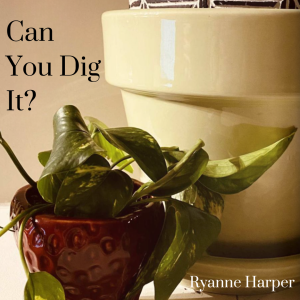 Dirt matters. It’s a hard lesson I am still struggling to learn. In my mind, a bag of potting soil is a bag of potting soil. But your plants can tell a difference! So, what is the difference?
Dirt matters. It’s a hard lesson I am still struggling to learn. In my mind, a bag of potting soil is a bag of potting soil. But your plants can tell a difference! So, what is the difference?
Cactus and Succulent
As the name implies, cactus and succulent soil works best for, well, cacti and succulents. I cannot tell you how many cacti and succulents I have unintentionally killed. I don’t know the number but it is exactly equal to the number of cacti and succulents I have ever had. I can’t keep them alive and, let me tell you, it has nothing to do with lack of water or general neglect because that is my entire plant care philosophy. So, it might be the soil, right?
Cactus and succulent soil is primarily peat moss, an organic material that dries out quickly, keeping your cacti and succulents from becoming waterlogged. Add some rocks and sand or pumice for drainage at the bottom of your pot and, boom, you’ve created the perfect conditions for your cacti and succulents. And it all makes sense, right? These plants thrive in dry, rocky and sandy environments, so, for best results, bring a little of their natural habitat home.
Potting Mix
The key word here is mix. Potting mix and potting soil are not the same thing. Soil is dense and used more for outdoor beds. For your indoor plants, you’re going to want to use a potting mix. Potting mix composed of soil, peat moss, sand, and coconut fibers. The mix is lighter and airer, allowing for drainage,
And this leads me to the biggest point. Root rot.
Using rocks, sand, and an airer mix will keep the roots of your plants from becoming waterlogged and rotting in their pot.
How to Spot Root Rot
Wilted leaves are a sign of root rot but hold up, because wilted roots are also a sign of underwatering, so you’ll need to investigate further.
Soupy soil and discolored leaves are further above the dirt signs of root rot. The roots themselves will be spongy, soggy, and brown. Yuck. But fear not! If you act quickly, you can save your plants.
- Remove the plant from the pot.
- As gently as you can, get as much dirt off the roots as you can and rinse the roots under clean water.
- With sterilized scissors, cut away the damaged roots.
- Repot in the correct mix. Here’s your chance for redemption; your opportunity to get it right
- Trim your plant back.This is the hard part. It’s tempting to want to keep every bit of healthy plant you have, but you’re just making it harder on your tender little baby roots that you were, until very recently, drowning. Cut them some slack by cutting your foliage back. Your plant will grow back healthier than ever!
This spring, when you’re hitting your local Coop stocking up on gardening supplies, grab a bag of potting mix and repot those indoor plants. And, for the love of Pete (moss), if you’re potting a cactus, don’t be like me, use the cactus mix.
Ryanne Harper

